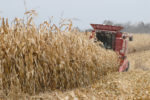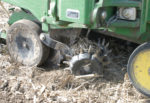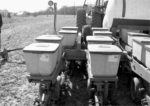Advertise Follow Us
Articles Tagged with ''Alfalfa''
Don’t Stand Still With No-Till
These no-till innovators refuse to be comfortable with their success and continually look for new ideas to improve their cropping program.
Read More
The Tools That Get The Job Done For No-Tillers
No-Till Farmer readers sound off about their no-till planter setups and the technology that helps them move residue to get proper seed placement and great corn stands.
Read More
What I've Learned from No-Tilling
It Pays To Listen To Your Dad About No-Till
Twenty-three years after his father suggested they no-till, Wisconsin farmer Dan Stokes no-tills corn as early as possible, grows diverse rotations, custom no-tills and milks cows, too.
Read More
No-Tilling Alfalfa Takes Good Preparation, Management
Planning a year ahead, managing the previous crop’s residue and using a well-maintained no-till drill are some of the keys to vigorous no-till alfalfa stands.
Read More
What I've Learned from No-Tilling
Continuing Education Helps Make Transition To No-Till Seamless
During a 3-year transition to twin-row silage corn, alfalfa, double-cropped wheat/soybeans and cover crops, these Pennsylvania no-tillers have seen steady yield increases and soil improvement.
Read More
No-Till Helps Grower Succeed In ‘Rocky’ Situation
Wisconsin farmer credits no-till for higher-than-expected yields on small-acreage farm.
Read More
What I've Learned from No-Tilling
Telling The World Why It Should No-Till An Easy Thing To Do
Preserving soil got southeast Iowa farmer Rodger Harrington into no-till, while being profitable kept him in it.
Read More
Failing A Requirement For North Dakota No-Tiller
Constant change, integration and diversification not only saved Gabe Brown’s farm, but also helped it thrive in tough conditions.
Read More
What I've Learned from No-Tilling
Preserving The Fertile Soils Of The Palouse
Going 100% no-till in 1997 has placed Read Smith in position to help lead the effort to protect the fragile farmland of eastern Washington.
Read More












